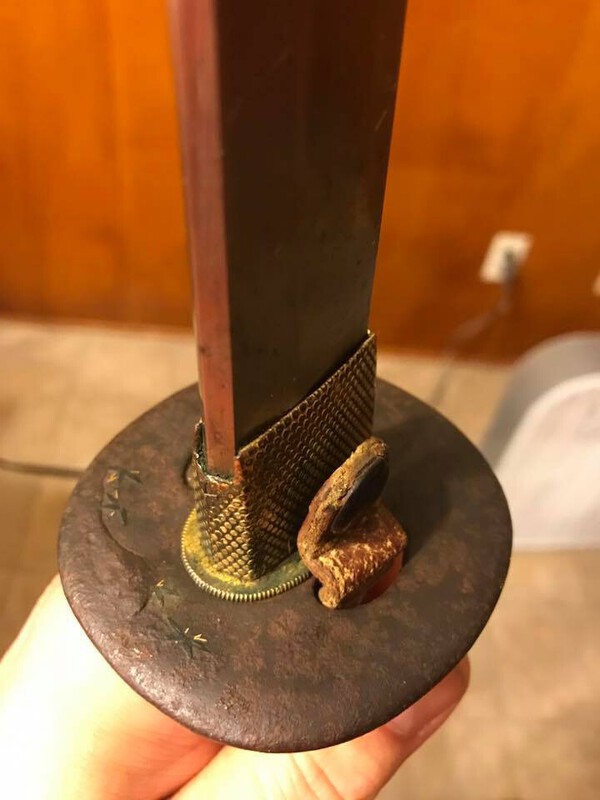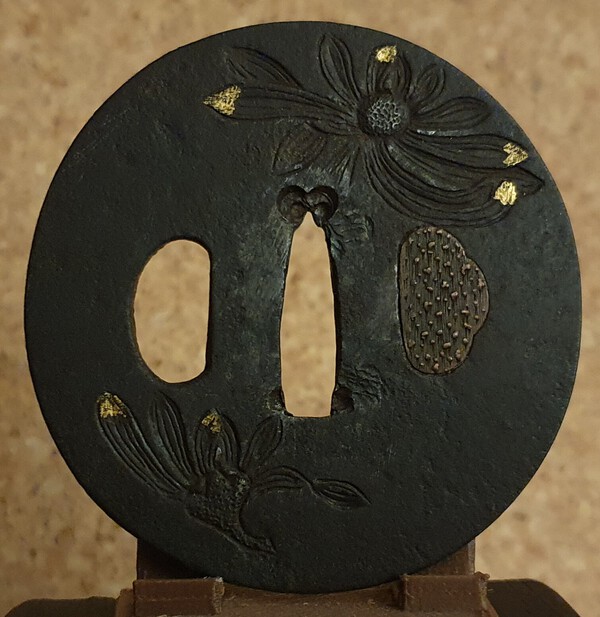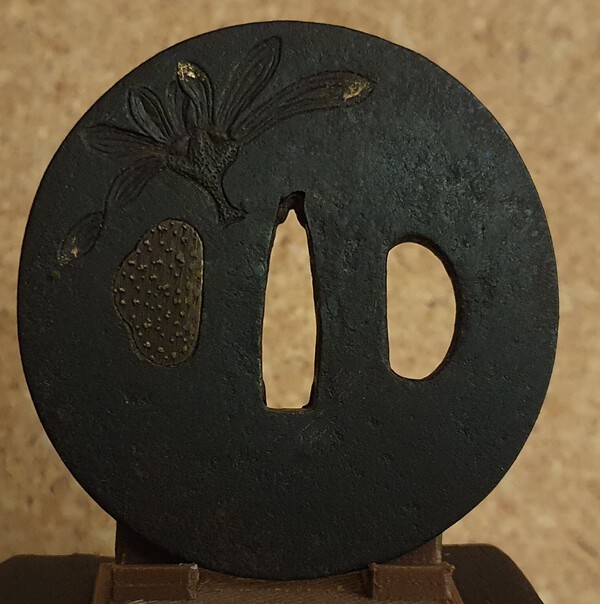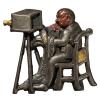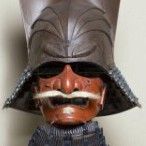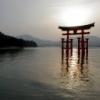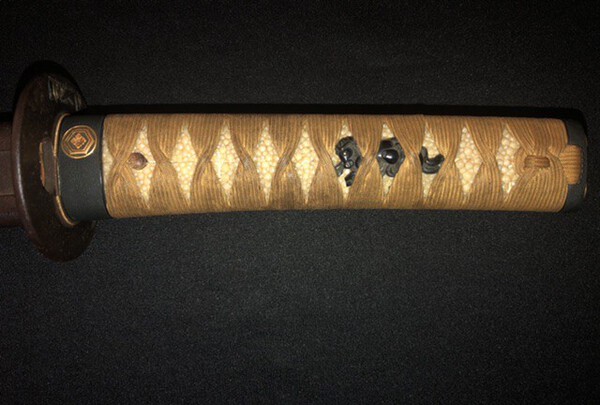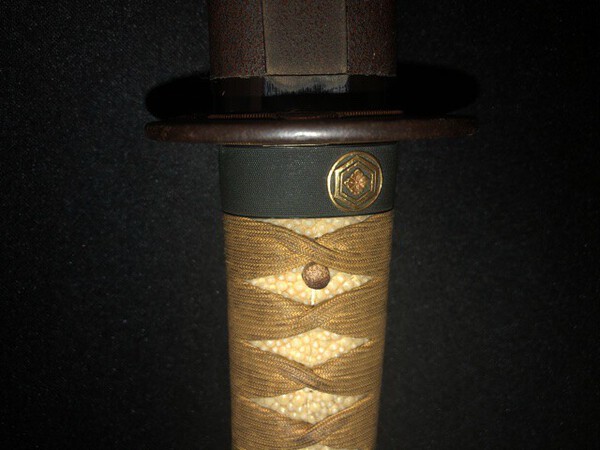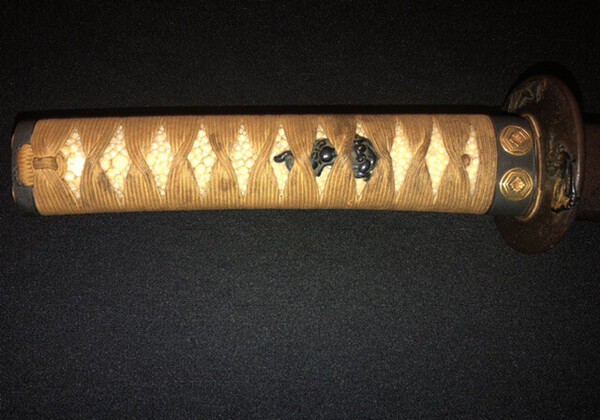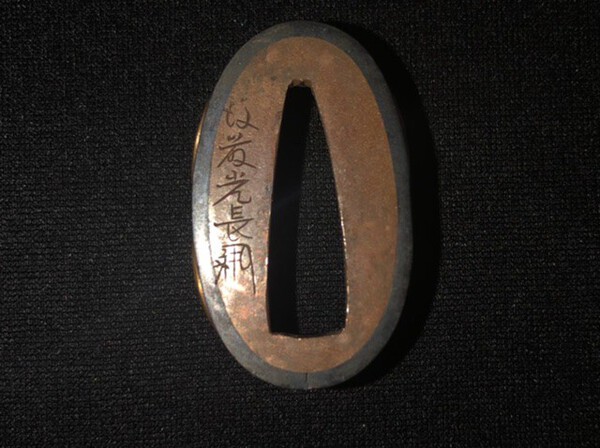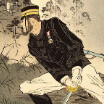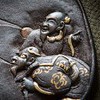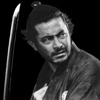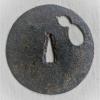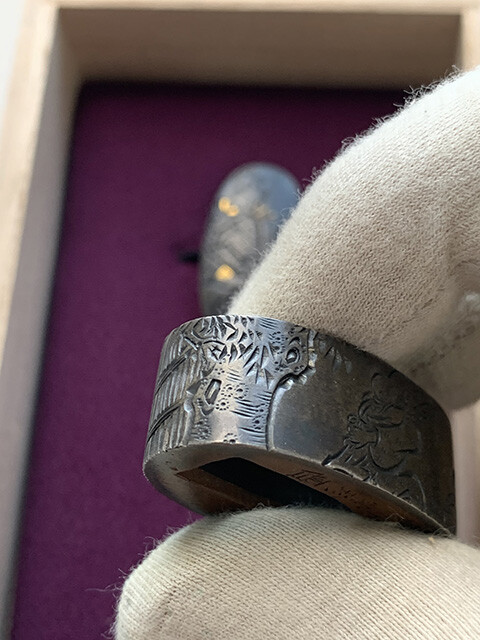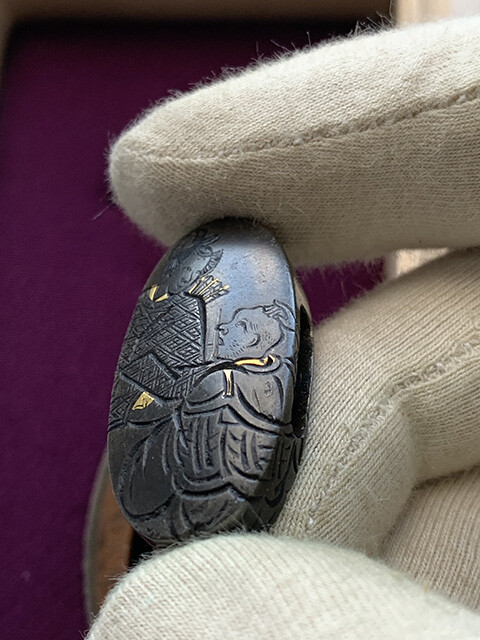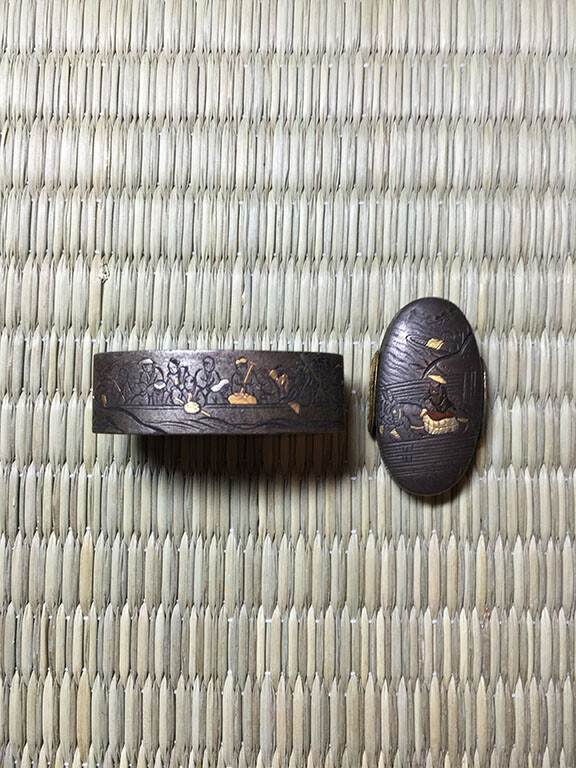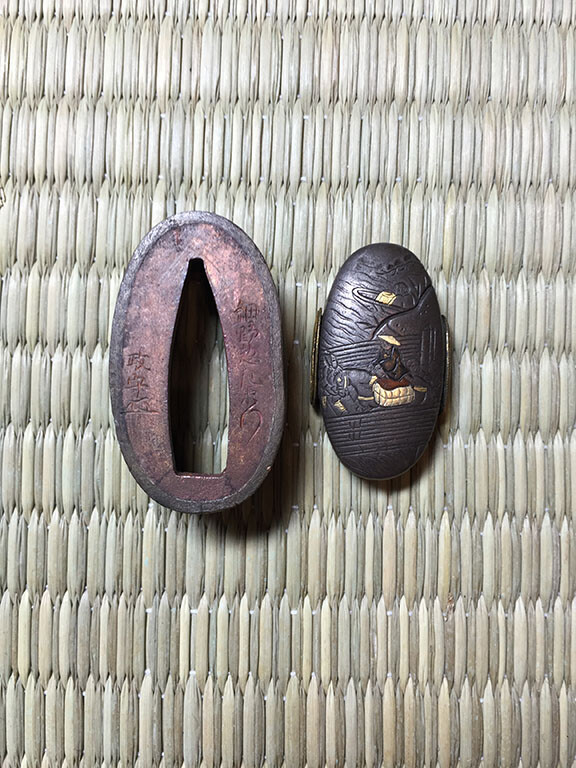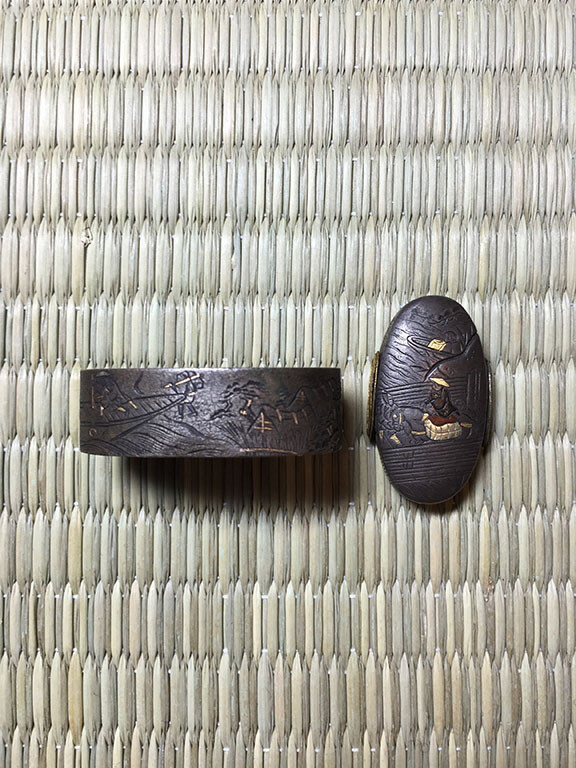Leaderboard
Popular Content
Showing content with the highest reputation on 02/18/2021 in all areas
-
4 points
-
I think we can get very fixated about sword definitions and lengths. As mentioned in Marcus's article, the Tokugawa were obviously uptight about commoners carrying swords that were just below 2 shaku, probably in overlong saya, and decreed the maximum lengths. Having said that, the samurai class were obviously not so rigid in their attitude, wearing swords commensurate to their stature. I have a daisho in which the daito is only 22.4" (57cm) long and the shoto 18.1" (46cm) which I worried about for a while before being told it was for a small person. Ian Bottomley3 points
-
I will let those with more experience give better opinions than mine, but it looks like there is way too much oil on the blade and it can stain the inside of the shirasaya or attract more dirt/dust leading to future staining/rusting of blade. You shouldn’t see those large drops like that. My advice would be to clean off the old oil and see if stain disappears. Once clean, a better assessment of that spot is possible. Then a very light coating of oil can be reapplied.3 points
-
2 points
-
Run away Carl. That's going to turn into a regret buy real quick. Set aside the funds towards something beautiful which will bring you joy for a long time.2 points
-
In fact, the leather-bound civil saya says that this was a civil sword re-fitted for the war, which quite often kept the civil fittings from the habaki up. The civil tsuka have a mix of military parts in varying degrees, but sometimes have no military at all. So, you have quite a wide latitude to re-fit this one.2 points
-
Hello, Thanks for the advice. I managed to remove the stain with some alcohol. So it probably was old oil. I re-oiled the blade (with less oil) and put it back in the shirasaya. So hopefully everything will be OK.2 points
-
Many WWII era swords, especially older blades, are often found with non-military tsuba. Find an old tsuba you like and mount it on the blade if you don't like the military style tsuba. Then you can say it's an old blade that went to war with its original tsuba. If you put the blade into 20th century civilian mounts, it will be neither military or period. It's your choice, but there are many options. The least expensive way would be to rebuild the wooden Tsuka as Dave suggested and use a tsuba of your choice.2 points
-
2 points
-
Last year I decided to get a cheap dou to go with my Zunari kobuto and today the stand arrived from Japan so I thought I'd show it before it goes in my gym/door. Over time I will get the missing pieces to complete the armor but im happy for now considering the budget I'm dealing with. My iaito/ kenjutsu sensei gave me a nice kendo armor to display next to it too.1 point
-
1 point
-
Hi Jack. Welcome to NMB. You have clearly done some research and learning and as this is your first sword then you have done a great deal better than most. (I see John has just replied.) I assume that you know enough to look after this one sensibly in the short term. As it is not in pristine polish I suspect that it is going to be really hard to get much better photographs at the moment. Depending on whereabouts in the country you are there are some members who would be happy to look at it in hand, when we can do such things again, and give you an opinion but in the meantime I would keep this one under advisement as regards polishing and so forth. I assume you know about the Token Society? All the best.1 point
-
The badge/mon looking thing on the back of the "lion sword" looks like the flag of the Wuchang Uprising. Afterwards it was used as the flag for the Republic of China.1 point
-
I think this "SHI SHI" could be Lion(Shi Zi 獅子)instead Lion Dog(Shi Zi Gou 獅子狗),it might related to "Lion sword"(獅刀),those swords was developed in the early 1920s by 北洋政府(The Warlord government of Northern China that developed from the Qing Beiyang army )。 Depending on the rank, the sword has from one lion up to 12 lions on it. 1920年2月29日,时任民国北洋政府大总统的徐世昌公布颁给狮刀的大总统规则令,随后,国务总理、陆军总长靳云鹏和海军总长萨镇冰发布第七号教令,正式建立起了北洋政府的“狮刀”制度。 “狮刀”制度的颁给规则共有十二条: 第一条 颁给狮刀,以陆少军官佐为限。 第二条 各等狮刀,由大总统特颁,不得呈请奖给。 第三条 一狮刀至三狮刀,颁给中级官佐。 第四条 四狮刀至六狮刀,颁给上级官佐。 第五条 七狮刀到九狮刀,颁给有特殊勋绩之上级官佐。 第六条 十二狮刀,除大总统佩带外,得由大总统特赠外国大总统、外国皇帝君主或体国曾任大总统者。 第七条 陆海军官佐,由大总统特令颁给狮刀者,应由陆军部或海军部注册 。 第八条 已颁给狮刀者,得晋给多狮之狮刀,其前颁之狮刀,无庸缴回。 第九条 一狮刀至六狮刀,发交陆军部或海军部颁给。 第十条 七狮九至九狮刀,由大总统亲授,其在京外者,得遣派专员代授之。 第十一条 十二狮刀之赠与,由大总统特派专使行之。 第十二条 大总统亲授狮刀之礼节,参照授勋之礼节行之。1 point
-
1 point
-
I have pics of war era Showato and Gunto swords with all sorts of tsuba, plain iron ones being quite common, sometimes the complete mount is otherwise regulation but for the tsuba. I have a theory that an officer who expected real combat would often fit an iron or steel tsuba, to cut down on glitter, and better protect the hand. A good blade will cut through brass guards.1 point
-
Hello, I would welcome any advice as to the correct translation of the mei on a kai - gunto recently purchased......My attempt has come up with : Chikushu Yanagawa Ju Yoshikuni ? ....Being absolutely useless at reading mei any advice on whether this is correct would be greatly appreciated.... Kind Regards, Paul....1 point
-
Hello Bruce, Yes , bought it as it is complete with knot and cord.....Couldn’t resist buying it...my photo’s don’t do it justice.... ! Blade has a nagasa of 21 inches with a lovely notare midare hamon... Regards, Paul..1 point
-
1 point
-
It has been a few years since I attended. Hopefully, a newly polished and up-paperrd, Etchu Norishige, can make an appearance once more! 🤯1 point
-
Hi Paul, Smoke oshigata are not a good idea; the carbon (soot) can become part of the nakago's patina, changing it from what it was before. Better to use oshigata paper and the ink stone; it leaves nothing behind and, with a bit of effort, does a much nicer job. Grey1 point
-
There is one here at catawiki https://www.catawiki.com/l/21380241-iron-tsuba-signed-kofu-ju-namitoshi-gold-inlay-Japan-19th-century It has a little more gold highlights. [ I have lightened the image so the mei is a little clearer, still difficult to read] The rim also has gold overlay. It is in fact the same tsuba as number 9. in the post by Andrey E. above. There is another in the Museum of Applied Arts & Sciences [Powerhouse Museum, Sydney Australia] Similar flower theme but the mei looks to be from another hand. A5308-31 Also one in the Ashmolean Museum [Jameel centre] http://jameelcentre.ashmolean.org/collection/8/object/20284 I am no expert on mei and the signatures may well be by different people but the style of work is the same.1 point
-
Dale, Sorry not to reply earlier - too busy... Just for grins I overlapped my image with the one from the jauce auction. Its not the best job, but you can see the pattern is different, just not by a lot. (Dicclaimer: I don't own the copyright to the image from Jauce - it is presented here for educational purposes only). It interesting that the corners were staked kind of in the same way (angled at corners) and that there is what looks like a squared off copper sekigane in the bottom only. I guess they both could be from the same "factory", but I don't think (at least mine) is modan or something, This seems to be a pattern that is often attributed to ko-hagi (which Torigoye claims is actually just another variant of kyo sukashi tsuba rather than being some kind of early choushuu work), though I think this is later than that (so you'd call it what, Edo period kyo sukashi work?) Best, rkg (Richard George)1 point
-
Looking under Yoshikuni. YOSHIKUNI (吉国), 1 st gen., Genna (元和, 1615-1624), Chikugo – “Chikushū Onizuka Yoshikuni” (筑州鬼塚 吉国), “Onizuka Yoshikuni” (鬼塚吉国), “Chikushū Yanagawa-jū Onizuka Yoshiuki” (筑州柳川住鬼塚吉国), he came originally from Tanagura (棚倉) in Mutsu province, he followed according to tradition Tachibana Muneshige (立花宗茂, 1567-1643), the daimyō of the Tanagura fief, to Yanagawa in Awa province when Muneshige was transferred there in the sixth year of Genna (1620), there exists a blade with the date signature of the second month Kei´an three (慶安, 1650) and the information “made at the age of 77,” this calculates Tenshō two (天正, 1574) as his year of birth, later smiths of this school revived the name “Onizuka Yoshikuni” towards the end of the Edo period because the blades of this lineage enjoyed a great reputation as being very sharp and durable, in general the workmanship of the Onizuka school resembles that of Hizen Tadayoshi (忠吉) but can not compete in terms of artistic approach and aesthetics, the sugata is stout, has a shallow sori, and a thick kasane, the jigane looks hard and the the jihada is a ko-itame mixed with masame, the hamon is like ay Hizen Tadayoshi a chū-suguha but has lesser and not so uniformly appearing nie, mostly also some knot-shaped midare elements can be seen along the monouchi, wazamono, jō-saku YOSHIKUNI (吉国), 2 nd gen., Kan´ei (寛永, 1624-1644), Chikugo – “Chikushū Yanagawa-jū Onizuka Yoshikuni” (筑州柳川住鬼塚吉国), “Chikugo Kurume-jū Onizuka Shigekuni” (筑後久留米住鬼塚茂国), “Yanagawa-jū Onizuka Shigekuni” (柳川住鬼塚茂国), “Onizuka Yoshikuni” (鬼塚吉国), he signed in early years with Shigekuni (茂国), dense itame mixed with mokume and masame, gunome-midare, or suguha mixed with ko-notare in nie-deki with a wide nioiguchi, in the case of a flamboyant ō-midare also sunagashi occur, also the blades of the 2nd gen. resemble Hizen-tō, the bōshi has a komaru-kaeri but can also be a kaen with hakikake YOSHIKUNI (吉国), 3 rd gen., Kanbun (寛文, 1661-1673), Chikugo – “Chikushū Yanagawa-jū Onizuka Yoshikuni” (筑州柳川住鬼塚吉国), “Chikugo Kurume-jū Onizuka Fujiwara Yoshikuni” (筑後久留米住鬼塚藤原吉国), suguha, gunome-midare, notare YOSHIKUNI (吉国), Keiō (慶応, 1865-1868), Chikugo – “ Nice smoke oshigata!!1 point
-
成、城、誠、etc. It should be a location name, but neither 重成 nor 重城 ring any bells. I took a shallow dive to search for any togishi named Ichikawa, hoping that it would point me toward the location, but came up empty.1 point
-
You have free hands in all directions. Look at ohmura study for more infos.1 point
-
Written into the very laws of Japan by the various rulers throughout history. E.g. Tokugawa shogunate laws restricting sizes and who could wear.1 point
-
Hi Greg. I just posted the next set of koshirae that I mentioned for sale. This one with papered, shakudo and gold Goto fittings. Thank you, Greg. —Matthew Brice www.StCroixBlades.com1 point
-
Personally I have no objection to the dealers rigid interpretation of a Katana being over 24 inches blade length. I have picked up a couple of very decent swords for bargain prices as a result.1 point
-
" I've had some war-era swords pass through my hands, as well as a lower-end but old wakisashi.".... I hope you don't mean that literally, because that hurts a lot and the blood get everywhere. I would say it's a Buke-Zukuri Showato taken to war, that got over-cleaned, and probably acid "polished". Regarding a new Tsuka, look for one minus the Ito, then you can dump it in the bath for a few hours to dissolve the rice glue and re cut the inside to fit your blade. Then proceed to refit and and rebind.1 point
-
Examining it closely with a magnifying glass, under both sunlight and artificial light, I don't believe this to be the case. What appear to have happened is that a rusted, pitted surface has been worn down with some abrasive...my guess would be an aggressive application of sandpaper. Followed by...dare I say it? A nice coat of Naval Jelly. I believe this treatment has given areas a flattened surface punctuated by isolated "dimples", wearing the top portion of the pits level and giving them an individual "punched" appearance. Other areas, where our handyman hero missed, the entire surface of that area is still pretty rough and looks like you would expect of an old piece of iron that has corroded.1 point
-
1 point
-
1 fine NTHK-NPO Goto tosogu wakizashi koshirae available. The owner asked the shinsa group to evaluate the fuchi/kashira. The signed fuchi/kashira were affirmed by the shinsa group to be by Goto Mitsunaga. These tosogu are fine shakudo nanako with gold clan mon. These are exceptional fuchi/kashira. The shakudo horse menuki are beautiful—these may prove to be Goto as well. The koshirae are in such fine condition, that we found it hard to justify removing the menuki to get a look at their backs. This koshirae has a wood tsunagi that was fashioned after the original sword blade. The blade measures 52.4 cm. $33001 point
-
You did get burned. The Nakago is artificially aged, those pitting marks are in fact hammer punch marks to make it appear pitted. The blade looks gendai. It's been dressed up to make it look old and attract the treasure bargain hunter. For 950$ you could have done much better looking for sales on the board. The seller did well here.1 point
-
Good evening Gentlemen Thank your for all your comments. The title of the thread was Buyer Beware. As an Antiques Dealer, of 35 years standing, known to have an interest in Japanese arms and armour, with a large Gallery in the City of Bath, UK. I have been offered suitably distressed versions of the type 98 that was produced in Hanwei a few years ago. These new ones are currently available on the manifest of the manufacturer in China, according to their website. The thread was no more than a heads up to the membership here, thirty years down the line, the next generation of collectors will encounter them. I believe that the Royal Armouries in Leeds often includes examples of fakes in its archive, to show as a teaching example to future generations of curators.1 point
-
Hamish, go easy. Malcolm is sharing what is obviously a Chinese newly made Gunto, for interest and to keep up with what the Chinese are doing as far as copies go. Thanks Malcolm. Pays to know what is out there to beware of. Also, I doubt this was cheap...probably close to what a used Showato costs. Not sure the market for these. But in 5 years of handling and messing around...these are hat we will have to be wary of.1 point
-
Malcolm didn't buy it, he's only showing us how the chinese fakes are coming along, these would be pretty good for re-enactors.1 point
-
Personally I think the prices are fair and market based, for what you are dealing with. We don't focus discussions around pricing here anyways, so let's drop the subject and focus on the quality. They will find buyers anyways. We are all small fry. The big buyers hardly blink when they spend that money.1 point
-
This is just amazing beautiful sugata-yokoya-nobusada-and-goto-mitsunobu@1m.jpg (1887×8000) (yuhindo.com)1 point
-
Interesting, and a good reminder that we depend on invisible people correctly doing their job. I always assume that shipping a package isn't rocket science but it's surprising the number of mistakes I've seen which made me wonder what had happened. Once I had a package from Japan (containing a tsuba) sent to a remote town in France (Seyssinet Pariset) where I've never been (and will probably never go). The correct address was in Paris. I will never know how Paris magically became Seyssinet Pariset during the shipping. It took me 10 frantic calls to the carrier hotline and several emails to the Japanese seller to get this sorted out. Another time, I got a katana sent from Japan automatically sent back to the seller with the rationale "Delivery refused" (supposedly by me). At that time, I was at home, waiting for the delivery, noone rang at the door... That feeling when you refresh the tracking page and read "Package sent back to sender" The package was then sucked into a black hole for 6 weeks with no way to know if it was still in France, in transit to Japan or lost... Eventually the package showed up in Japan and was delivered to me in 3-4 days.1 point
-
Revised "Chapter 67, How to Handle Swords" was posted. Please click the link below to go to this chapter directly. https://studyingjapaneseswords.com/2019/11/14/how-to-handle-a-sword/ Thank you Yurie1 point
-
1 point
-
Thank you very much for your comment. The comment like yours keeps me going. I am working with an editor to put this together to a book. But constantly doubtful mind keeps me telling that what I am writing is not worth anything. Your comment really cheer me up. Thank you Yurie1 point
-
Bernard, most of the photos are upside-down, but other than that the little TSUBA is o.k. Condition is so là là...1 point
-
I have to agree with John J. the ten-zogan is real and what remains of it is well done. I would say the theme is Chrysanthemum flower on water like Thomas S. suggested "Floating Chrysanthemum" = kikusui. The waves are a bit hurried but I have seen worse.1 point
-
On January 6, 2017 I posted here a few orphan fuchi. I sold most of them since I didn't see any point in collecting broken sets. But kept only one example, a signed Furukawa Jochin fuchi with a priest and kids. Only one single piece in my whole collection. Just didn't want to part with it since I very much like the motobori techniques. And finally a couple of months ago while running my daily search I found a kashira, which in my opinion matches the fuchi almost perfectly except maybe the inlay work but in motif for sure. So, meet the new happy couple)1 point
-
1 point
-
This thread is not supposed to arrive at any final conclusion. It is about collecting ideas and infos. First of all, my examples posted here are from Western collections. It is quite difficult to find tsuba like these in Japan (or Japanese books) that have not left the country in the meantime. You will never find them in the legacies of Daimyo families. In Japan their prestige was obviously quite low at the time of their manufacture. Why? Some of them were quite skillfully executed, but educated Japanese didn't like them. Some of the older schools and masters made spectacular tsuba as well. What are the differences? After a while you get a feel for them, but putting this sentiment into words and creating criteria is not easy. That's why I started this thread. Here are a few ideas to consider and to discuss (this is not supposed to be a lecture): - traditional Japanese design "knows when to stop". There should be a balance between empty spaces and the one(s) occupied by actual design. Some Meiji-period tsuba are crowded and (over-)loaded with too many things. The tsuba with fish and ray is a good example. - the motto "the bigger the better" might suit McDonald's and simple minds, but is contradictory to Japanese aesthetics. This goes for the size of plates as well as for the space occupied by design. - colors should always be in harmony as well as the finish of the ground material. Japanese favoured ones and disliked others, but most of all: they should go on well together. Many Meiji-period tsuba are lacking this quality. Flashy "bling bling stuff" and mismatching colors are as far from the "real thing" as they can get. Well-made tsuba are glowing, not shining. - understatement: hard to believe, but this was a real quality before Meiji-period. Even spectacular works by Ishiguro-school artists, Mito KinKo and others are not displaying their true qualities at first sight. Many Meiji-period tsuba however are pretenders at first sight. Trying to capture the eye, but disappointing at second sight. BTW I had to go quite deep into my library to find (confirmed) tsuba of Meiji-period illustrating my point of view. Please stick to these examples unless you are sure of what you are posting. Otherwise confusion is sure to come. Thank you. reinhard1 point
This leaderboard is set to Johannesburg/GMT+02:00

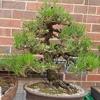




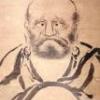

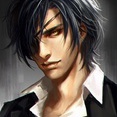

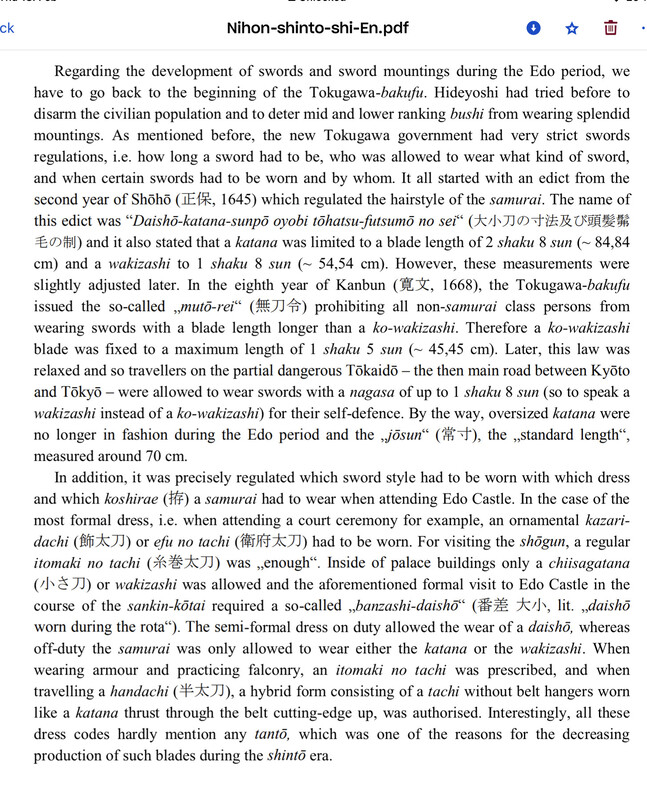
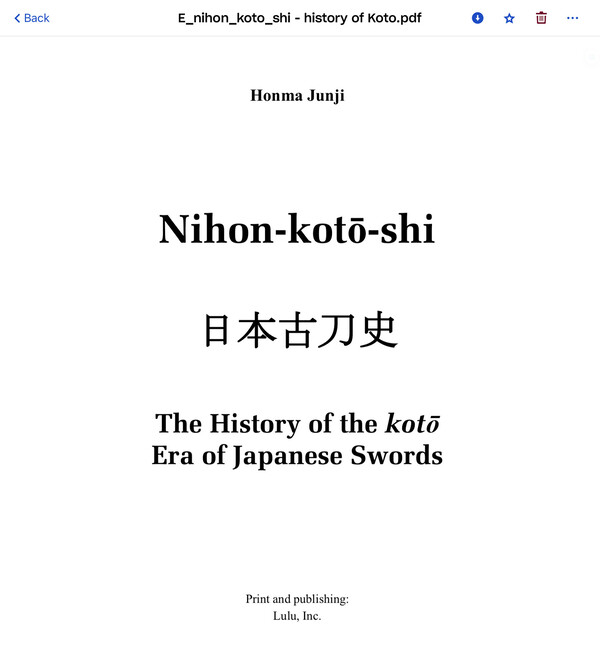


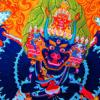

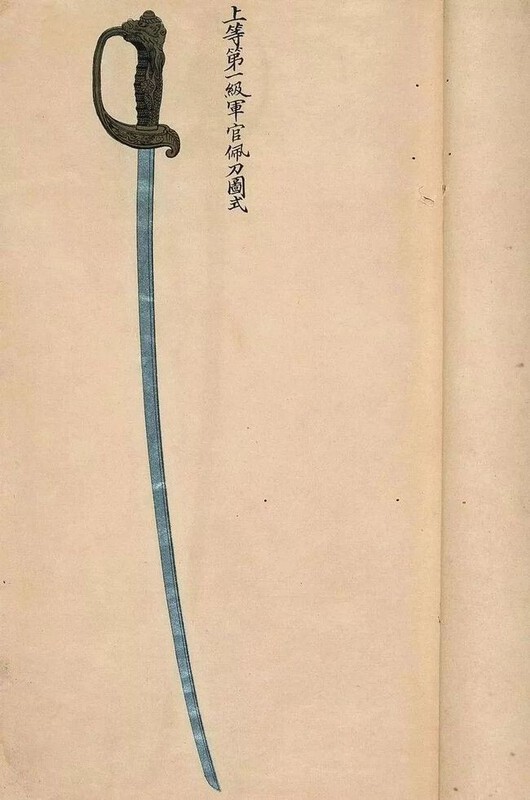
.jpeg.162e53d6c086fe742102421e216508cf.jpeg)

.jpeg.17c18579ebc6cb2a15512f9954b91541.jpeg)
.jpeg.8570fd3ceeade779a782669848e3961a.jpeg)



